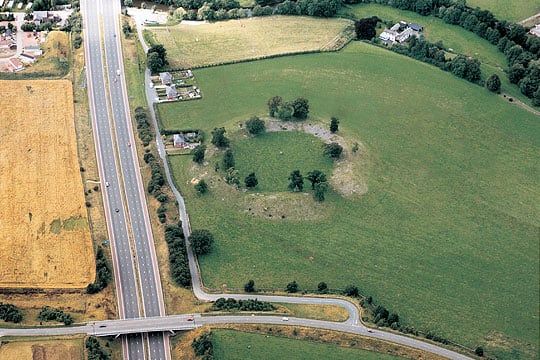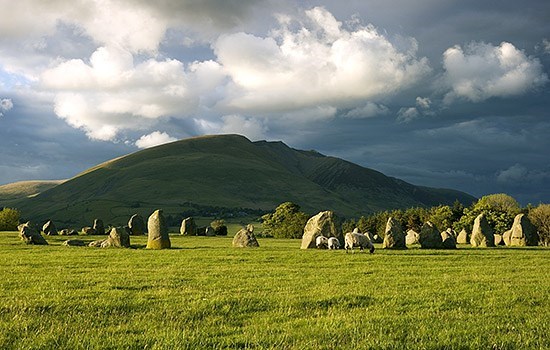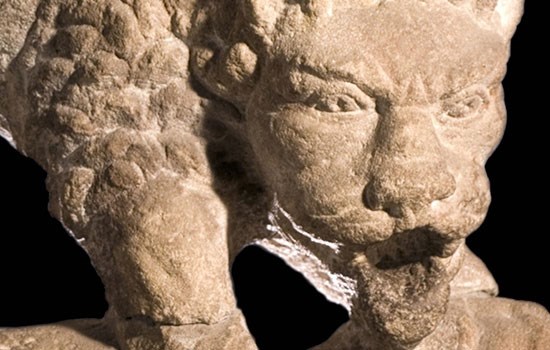History of Mayburgh Henge
Despite being situated close to the motorway the impressive prehistoric monument of Mayburgh Henge can be a remarkably peaceful place.

Once you pass through the entrance into the henge on the east side the reason for this is clear: the central area, almost 325 feet (100 metres) in diameter, is surrounded by an enormous bank, composed of river pebbles and now crowned in places by trees.
Some parts of the roughly circular bank are almost 10 feet (3 metres) high, creating a vast enclosed space.
Although the henge is within 1.25 miles (2 km) of the centre of Penrith and within a few hundred yards of the neighbouring monument of King Arthur’s Round Table, this mysterious monument has remained largely undisturbed.
Unusually for a site of this type there is no surrounding ditch, while the bank is extremely tall. Slightly north west of the centre is a single large standing stone, just short of 10 feet (3 metres) high. Originally seven others accompanied this: three more in the centre, forming a square with the fourth, and two pairs flanking the entrance. The other stones were recorded as standing in the eighteenth century. It is thought that they may have been removed to provide building material for either Penrith Castle or Eamont Bridge, although there is no real evidence to support this suggestion.
Legend has it that the labourers responsible were cursed for their act of desecration, one going mad and another hanging himself.
Mayburgh Henge probably dates to the end of the Neolithic period or the beginning of the Bronze Age, about 4,500 years ago. The function of such large monuments is not fully understood, although it is thought that they played a role in social or ritual activities, perhaps involving trade or astronomical observations.
Excavations
Over the centuries several artefacts have been discovered within the vicinity of the henge, including a bronze axe, a stone axe and a flint arrowhead, but these shed little light on its probable use. What is certainly evident from the sheer size of the bank and the effort clearly invested in its construction is that this was a monument of some importance. Its close proximity to the later henge of King Arthur’s Round Table, and the surviving records of prehistoric burial mounds in the area, also demonstrate that this was an area of some cultural significance in the later prehistoric period.
Modern Celebrations
As part of the millennium celebrations in the year 2000 a large stone monolith was erected nearby, intended to acknowledge the past, present and future importance of the monument.
Further Reading
Topping, P, ‘The Penrith Henges: a survey by the Royal Commission on the Historical Monument of England’, Proceedings of the Prehistoric Society, 60 (1992), 285–324
FIND OUT MORE



